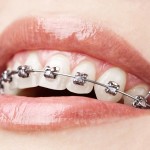
The introduction of direct orthodontic bonding materials marked an important development for orthodontic treatment. Since their introduction a range of materials have been used, composites, glass ionomer, resin-modified glass ionomers, compomers, cured via chemical reaction or by light.
The main aim of this review was to compare the failure rates of different orthodontic bonding materials.
Methods
A protocol was registered on the PROSPERO database. Searches were conducted in the Medline/PubMed, Embase and Cochrane Central Register of Controlled Trials (CENTRAL) databases. Clinical studies (randomised controlled trials (RCTs), non-randomised controlled trials (NRCTs), and controlled before–after studies) analysing the failure rate of brackets bonded using different direct adhesive techniques (including both precoated and operator coated brackets) on buccal sites of healthy teeth were considered. Two reviewers independently selected studies extracted data and assessed risk of bias using the Cochrane risk-of-bias tool (RoB 2) for RCTs and the Risk of Bias in Non-randomized Studies of Interventions (ROBINS-I) for NRCTs. The main outcome was bracket failure with risk ratios (RRs) being pooled using a random-effects meta-analysis.
Results
- 80 studies met the inclusion criteria with 34 contributing to the quantitative synthesis.
- 1221 patients were included in the 34 studies of which 27 were 27 split-mouth studies and 7 parallel with sample sizes ranging from 10 to 100 patients.
- Bonding techniques investigated included conventional acid-etch primer (CM-AEP), self-etch primer (SEP), self-cure resin (SCR), and simple or resin-modified glass ionomer (RM-GIC) materials.
- No difference was seen in bracket failure between SEP and CM-AEP at 6, 12 or 18 months (see table below).
| SEP v CM-AEP | No. of studies | Bracket failure % SEP | Bracket failure % CM-AEP | Risk ratio (95%CI) |
| At 6 months | 10 | 3.6% | 3.6% | 1.04 (0.67 to 1.61) |
| At 12 months | 9 | 4.9% | 3.4% | 1.37 (0.98 to 1.92) |
| At 18 + months | 5 | 4.6% | 5.2% | 0.93 (0.72 to 1.20) |
- A significantly lower failure rate was seen for SCR compared with RM-GIC at both 12 and 18 months (see table below).
| SCR v RM-GIC | No. of studies | Bracket failure % SCR | Bracket failure % RM-GIC | Risk ratio (95%CI) |
| At 12 months | 10 | 5.5% | 11.5% | 0.38 (0.24 to 0.61) |
| At 18 months | 4 | 15.8% | 36.6%. | 0.44 (0.37 to 0.52) |
Conclusions
The authors concluded: –
The results revealed no significant difference between SEP and CM-AEP up to 18 months after application. RM-GIC had much worse failure rates than acid-etching methods; additionally, the superiority of SCR over RM-GIC was evident, indicating strong clinical relevance.
Comments
The reviewers pre-registered a protocol and searched a good range of databases. They decided to include both randomised and non-randomised studies with 80 studies meeting the inclusion criteria. From these 80 studies 34 contributed to the quantitative analysis which is included in the main publication with an additional qualitative provided as a supplementary document. A majority of the 34 studies were of a split mouth design so there are concerns related to clustering of data and the studies are generally small with only 9 involving 50 or more patients.
A 2013 Cochrane review (Dental Elf – 27th Nov 2013) compared different etching techniques for bonding orthodontic brackets finding only: –
low‐quality evidence that was insufficient to conclude whether or not there is a difference in bond failure rate between self-etching primers (SEPs) and conventional etching systems when bonding fixed orthodontic appliances over 5‐ to 37‐month follow‐up.
This new review addresses a broader question than the earlier Cochrane review, including 7 of the 13 studies included by Cochrane. The findings of this suggest little difference between the self-etch primer (SEP) and conventional acid-etch primer (CM-AEP), and a poorer performance for glass ionomer (RM-GIC) compared with self-cure resin (SCR). However, this should be interpreted cautiously because of the low certainty of the available evidence.
Links
Primary Paper
Dudás C, Czumbel LM, Kiss S, Gede N, Hegyi P, Mártha K, Varga G. Clinical bracket failure rates between different bonding techniques: a systematic review and meta-analysis. Eur J Orthod. 2023 Mar 31;45(2):175-185. doi: 10.1093/ejo/cjac050. PMID: 36222731; PMCID: PMC10065138.
Other references
Dental Elf – 24th May 2018
Dental Elf – 27th Nov 2013
Only low-quality evidence to assess effectiveness of bonding for fixed orthodontic appliances
